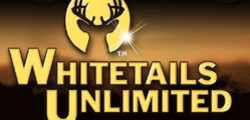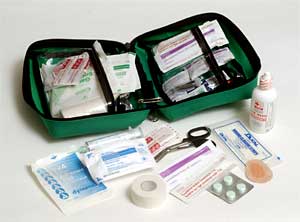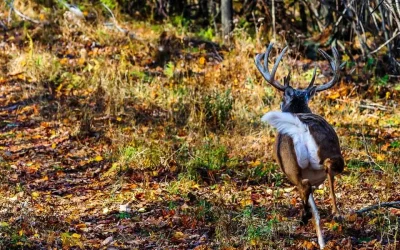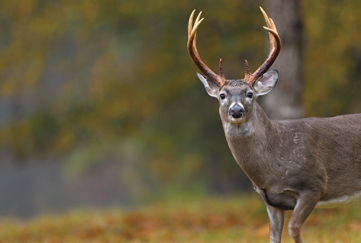|
There are many ways to configure a first aid kit. The easiest is to purchase a good commercial kit and then customize it to your circumstances by taking out items you do not need and adding items more suited to your activities. |

While this is a prime tenet of the Hippocratic oath that doctors swear to uphold, it also is a prime directive for non-doctors attempting to render first aid to themselves or others in an outdoor injury situation. Understanding the aid limits imposed by the first-aid kit itself or by an untrained aid giver keeps one from doing more harm than good.
Also understand that the “general” first-aid kit is a limited concept. Basic first-aid kits, are just that, basic. They are starting places for personalized first-aid additions that are determined by:
* Environmental hazards inherent to the specific area.
* The specific outdoor activity and its known inherent risks and dangers.
* Your own personal health history and personal medicines, including maintenance prescription medications taken regularly and remedies for chronic or recurrent conditions that could conceivably crop up.
The AREA and the ACTIVITY
Where one is going, what one is doing and how long one is going to be doing it – all these factors determine both the size and the make-up of the “personalized” first-aid kit.
Long stays in the remote backcountry require more extensive first-aid kits (and more first-aid knowledge) than short day hikes in green belts near civilization. How far are you from help; how fast can you get to it or can it get to you? These are serious first-aid concerns. (Letting someone know exactly where you are going and when you expect to get out, is both a survival and a first-aid issue.)
The nature of specific activities should be considered. Climbing and canoeing have high bruise and abrasion potential. Broken bones are not out of the question in the more extreme forms. Hikers and hunters typically deal with blisters, stone bruises, cuts and scratches. However, eye injury from tree branches, falls and sprains are not uncommon.
Duration of activity regarding first-aid issues has a basic tenet of common sense–Unless the injury is minor or superficial, come out and seek professional medical aid immediately.
On the other hand, long-distance hikers and wilderness backpackers should consider remedies for sore muscles and joints that will allow them to continue their activity.
The point is, consider the most likely injuries or health-related risks for a given area/activity and build extra “stuff” into the first-aid kit to deal with these.
READ THE MANUAL
Perhaps the most important part of any first-aid kit is a good first aid manual. Read and understand it. Then pack it with the kit. Prior reading and knowledge help you start first-aid procedures faster and perform them better under stress. Have an orderly, well-organized kit and a thorough understanding of each medication, bandage and tool. Don’t wait until the last moment, when in an uncomfortable, stress-filled situation, to try to figure out first aid and find the appropriate materials to administer it.
STIFLE THE PANIC
Read “READ THE MANUAL” again. Panic can be drastically toned down and/or brought under control if:
* You know where the first-aid kit is.
* You know what it contains and what is required for the situation.
* You know how to use the materials for effective first aid.
FIRST AID BASICS
The extent of first aid is limited by lack of professional medical training. Setting bones and needle suturing are not recommended for non-professionals. However, there are certain things that can and/or must be done until the doctor comes. Some are vitally necessary and must be accomplished rapidly in an emergency situation.
FIRST-AID BASICS – Know How To:
* Make sure the airway stays open (take a CPR class).
* Stop bleeding (pressure and bandage).
* Prevent shock (keep victim warm, still and comfortable).
* Prevent infections (clean and apply antiseptic to wounds).
* Bandage wounds and tape (athletic bandage) sprains.
FIRST-AID KIT BASICS
The following list of suggested first-aid materials should not be taken as the final word. These are merely some basic items to be considered if you are building your own kit or evaluating various commercially available models. However, only you, after serious thought, can truly personalize a first-aid kit to fit your needs.
Also remember, even minor problems can turn into major discomfort in the backcountry. Don’t discount diarrhea, blisters or even heartburn as being able to seriously impair the quality of your outdoor experience.
* TOOLS – Small scissors, tweezers, thermometer, small flashlight, several sizes of safety pins and several tongue depressors (finger splints).
* EMERGENCY BLANKET – Shock can make some survivable injuries much more serious. Use blankets or a specialized survival blanket like the Space® Brand Emergency Blanket to keep the victim warm and sheltered. It can also be made into and emergency litter to help transport an accident victim.
BANDAGES
* BAND-AIDS of various sizes. The regular 3″ sizes is most useful, but include some of the larger sizes for larger wounds, plus some finger-tip, knuckle and even the smaller bandages.
* 10 each 4×4″ and 10 each 3×3″ sterile gauze pads. These help stop bleeding, and can be used to clean and cover a wound.
* Two gauze eye patches. A scratched cornea from a swinging tree branch or foreign particles in the eye is very painful. Immediately flushing and covering the injured eye will bring relief.
* 10 butterfly suture type bandages for quickly closing cuts. One roll of 4″ wide sterile gauze for wrapping.
* One roll of 2″ wide adhesive tape. The type that is enclosed in a container to keep it clean and prevent drying out is preferred.
* One 2″ roll of elastic bandages (athletic bandage) for sprains and general wrapping or bandaging.
* Moleskin for blisters. Blistered feet may sound trivial, but they are extremely painful and debilitating in most outdoor activities.
MEDICINES
* Eye Drops or eyewash to flush eyes.
* Antiseptics to clean wound and prevent infection.
* Antiseptic wipes and antiseptic soap for cleansing. Examples: Betadine solution or ointments such as Neosporin, Bactracin or Hydrocortisone cream. Iodine is an old standby that can also be used to purify water. These are very important elements of a first-aid kit. Preventing the onset of infection is critical in the outdoors environment. Anti-Inflammatory remedies for muscle and joint soreness. Non-prescription types include Aspirin, Tylenol and some types of Ibuprofen. Stronger anti-inflammatory drugs must be prescribed by a doctor and can have significant side effects.
* Antacids – You may have to eat your own cooking! Also antacids can ease some side effects of strong anti-inflammatory drugs.
* Anti-Diarrhea Medication – Speaks for itself.
* Topical Analgesics reduce surface pain and itching associated with insect bites, contact dermatitis (poison ivy, rashes), etc. Examples are Caladryl, new BENADRYL GEL (not pills) and products containing Lidocaine or Cortisone. · Antihistamines reduce swelling in mucous membranes and soft tissues. Effective for hay fever-type allergic reactions. Remember that your outdoor experience will introduce you to new pollens and spores.
* Bee Sting Kit – Anaphylactic shock is an allergic reaction that can kill. If you or anyone in your party is known to be allergic to bee, wasp, hornet, etc. stings get a special sting kit prescribed by a physician. In case of unexpected onset of anaphylactic symptoms (difficulty breathing), administer antihistamines. This is an emergency situation; seek medical help immediately.
* Snake Bite Kit – Current medical opinion discourages radical first-aid measures for snakebite beyond simple suction and a slightly tight ligature above the bite. Cutting and tourniquets are out!!! Get to a hospital immediately.
* Special and prescription medications – Consult your physician regarding your outdoor plans. Get prescriptions for any special or maintenance medications you might require. Discuss possible adverse reactions to the over-the-counter remedies suggested above (Anti-inflammatory, Antihistamines, etc.). Ask if your prescribed medicines have an “outdoors downside.” (For example, certain antibiotics increase sun sensitivity.)
Remember that you don’t need a ton of each medicine. A small amount, stored in a small packet will suffice. You can get these at a retail home care or medical supply stores or make up your own using clean and labeled 35mm film canisters for storage.
FIRST-AID KIT SIZE
Obviously, your outdoor activity determines how big your first-aid kit can be. Boaters and RV campers can carry a small pharmacy while hikers and rock climbers must carry a bare minimum. Look at the example of emergency medical and mountain rescue personnel. Their first-aid equipment is modular in concept and organization. Each large kit “breaks” into smaller kits as the need to go farther and lighter demands. The outdoor recreationist can have a “large” kit for vehicle and camp and a smaller kit for personal carry.
Keep the “personal” kit with you. The whole point of building your “own” personal first-aid kit is for it to be available when you need it – which is often when you least expect it.
FIRST AID’S GOLDEN RULES
1. “First, do no harm.”
2. Read the first aid manual and then re-read the manual.
3. Have your kit with you at all times.
4. Know what’s in it, where it is and how to use it.
5. Stop bleeding.
6. Prevent shock.
7. Prevent infection.
8. Seek or Summon medical help immediately.
NOTE: This article is a collection of information and suggestions garnered from personal outdoor experience. It is in no way to be construed as the only measure in reacting to a medical situation, it is intended only as a defensive and preparatory posture of ideas and suggestions. ALWAYS rely on professional medical advice.
For more information on Whitetails Unlimited, their Event and how to become a member go to https://www.whitetailsunlimited.com/






0 Comments